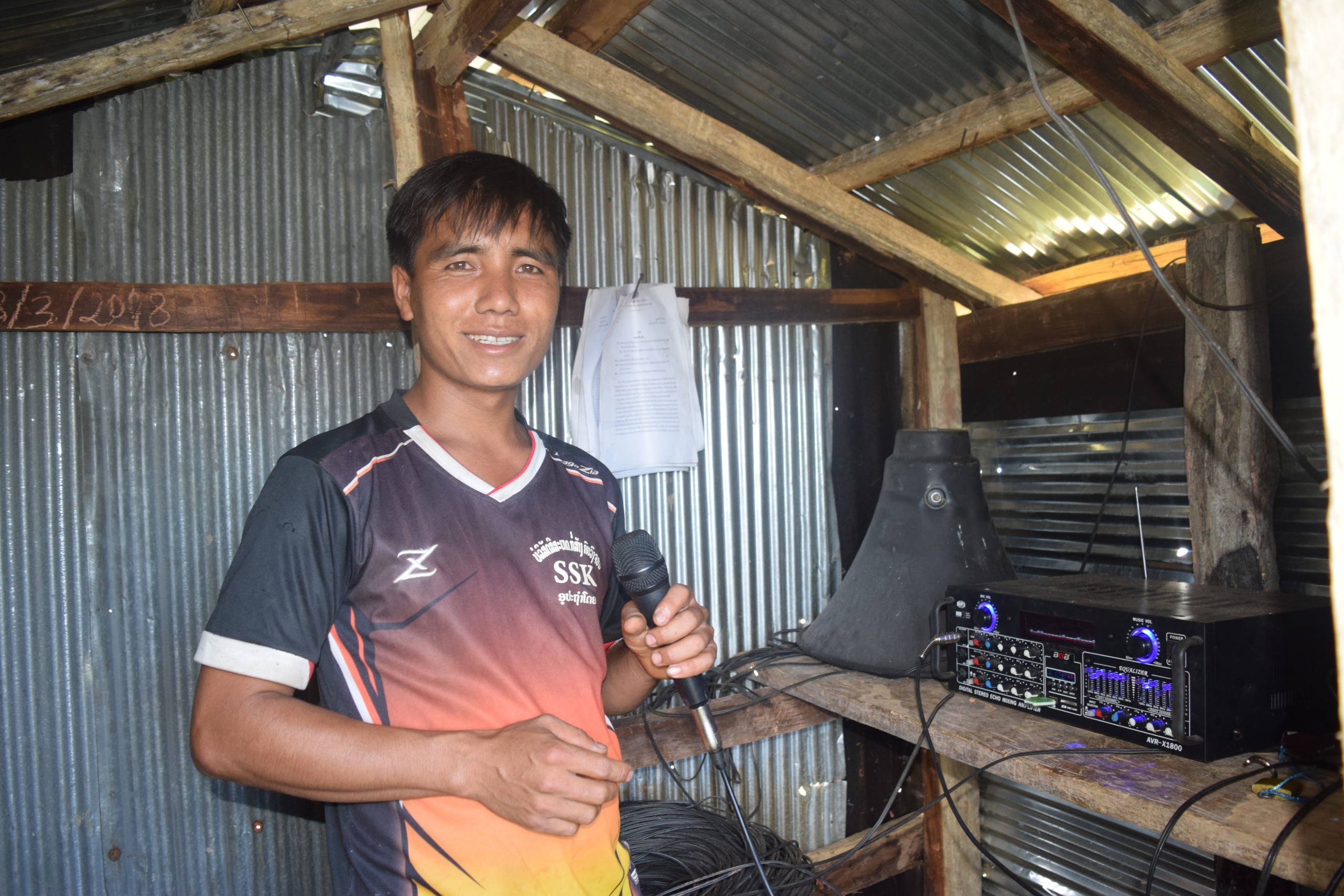Agro-Climate Information: tools for livelihood decision-making in the face of climate change.
In Phongsaly province in the Northern Uplands of Laos PDR, farmers are experiencing impacts of climate change, which are disrupting the climate and ecosystems they depend on for their livelihood. Farmers’ lives are punctuated by distinct wet and dry seasons with rice and other crops planted ahead of the monsoonal rains. Climate change is disrupting the onset and intensity of the rains. In response, rural ethnic minority communities are being supported to access short-term and seasonal forecasts, agricultural market information, and information about long-term climate change.
The Dominant Role the Weather Plays
In the village Laoleo in Laos, the weather has a significant influence on the villagers’ income. With daily weather forecasts, it is becoming easier for the villagers to adjust to the changing climate.
In the northern Laos within Phongsaly Province, the villagers experience climate change first hand. Saiphone is one of them. His income is based on his agriculture, just like many other villagers in this area. Saiphone is growing cardamom. No matter what crop the villagers are basing their income on, the weather has a huge influence on their harvest and therefore also their income and in turn, their survival.
In their occupation, accurate weather forecasts are vital for making Saiphone and the other villagers able to navigate in a changing climate. One thing is for sure: climate change is a reality they cannot change, so they will have to adjust.
Daily weather forecasts
One of the solutions they can adjust is by following the weather closely. This is exactly what Saiphone does. He is 36 years old and the head of the village Laoleo, where he lives in. With that position follows the responsibility to inform the other villagers about the weather. He does that from his speaker system, which is based on top of a hill in the middle of the village.
Saiphone is walking down the mountainside, which the village is built on, from his house and to a small shed where the speaker system is. From here you can see the whole village that covers the side of the mountain.

He is proudly showing the speaker system and turns it on so loud music is playing from the speaker. He is holding the microphone he uses everyday when he
delivers the weather forecasts to the village.
“The speaker has done things a lot easier for us. First and foremost, I am now able to information all the villagers. Before I had to yell the weather forecasts to make sure as many villagers as possible would get the information. The weather forecasts are very useful because we are able to plan our work in the field in regards to the weather,” says Saiphone.
The equipment is provided by CARE who is also – in cooperation with the Laotian government – providing them with the weather forecasts. Saiphone receives the information every night through a mobile telephone. The following morning at 6 AM, is he informing the rest of the village through the speaker.
The village Laoleo has been using the speaker for the past three years but the weather forecast goes way back. Before the village was provided with the necessary
equipment, they were receiving the weather forecasts by letter. In an area as Laoleo with very little road accessibility, it could take a month before the letter would arrive to the village. At that time, the weather forecast the letter contained would not be applicable as the time it covered would have passed.
Changed weather conditions
With the equipment to receive daily weather forecast, life in this village has been able to become a lot easier. Saiphone and the other villagers feel the bigger need for accurate weather forecasts. Earlier they were able to predict the weather based on previous experiences but this year it has been impossible to predict the weather. This year is also the first year the village is receiving daily weather forecasts instead of weekly.
This year has seen increasing rain, higher temperatures, and the rain began later than usually. Saiphone is telling that they have seen more landslides this year when compared to previous years. All a result of a changed climate. “In that way, the climate change is affecting us a lot. Especially families who are living close to the river and down the mountainside have experienced landslides and flooding,” says Saiphone.
Saiphone’s fields have not been flooded but he has noticed that his cardamom has been growing less this year when compared to last year. Probably because of more rain. The changed weather conditions are a part of the villagers’ everyday life, and with very little resources, it is very difficult for the
villagers to navigate in. With accurate weather forecasts do they have a chance to adjust their agriculture to the new weather conditions.
“More villagers have said that they are happy about the daily weather forecasts because they can now plan their work in the fields,” Saiphone explains.

